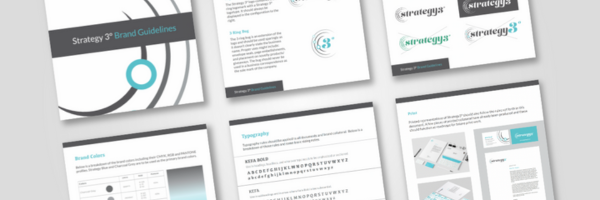3 Things For February 3rd, 2024
Are We Aligned?, Important Email Changes!, Brand Consistency
Are our values aligned?
I read one of Seth Godin’s latest blogs on choosing a college when you’re 17. I wouldn’t normally be inclined to click on a link about choosing a college but I’ve been interested in the plight of young people lately and Seth always has little nuggets that I enjoy. Read down the blog a bit and he gives two pieces of advice that are good for anyone of any age when thinking about where we want to work, live or who we want to hang out with: 1. Are the people this place attracts the sort of people I want to spend time with and become more like? 2. Is the system that is in place here one that pushes and cajoles and processes people to become more like the kind of person I’d like to be? When I joined the BNI group I belong to, it was because the thought that stood out the loudest in my mind was: these are exactly the kind of people I need to be around! It was and is a group of go-getters committed to the success of their businesses. Recently, on a consultation call, it was clear to me that my potential new client was not currently working with a group of marketers that were aligned with the same values they had. This potential new client has a team of people that are also go-getters and they have a clear set of goals; they want a marketing company that will support that growth. I left the call hoping that they saw in me and my company similar values including clear and transparent communication and reporting with a strong emphasis on ROI. When setting goals this year and making the decisions of where we’re going to spend our time and resources, we must ask ourselves: are the people involved the kind of people I want in my life?
Gmail & Yahoo’s Email Policy Changes for 2024: A Guide to Compliance
As of February 1st, 2024, Gmail and Yahoo have rolled out their anticipated email policy updates, marking a significant shift toward enhancing email security and reducing spam. These changes, now in effect, are designed to streamline email communication and safeguard users from unwanted content. What You Need To Know: 1. Email Authentication Required: Bulk email senders, specifically those dispatching over 5,000 emails to personal accounts within a 24-hour period, must now employ SPF, DKIM, and DMARC protocols. This mandate ensures the verification of email authenticity. 2. Streamlined Unsubscribe Mechanism: The introduction of a mandatory one-click unsubscribe feature in email headers simplifies the process for users wishing to opt out, with all such requests requiring action within two days. 3. Defined Spam Complaints Limit: The policies set a cap on spam complaints at 0.3%, it is recommended to lower this rate to beneath 0.1% to optimize email deliverability. What You Need To Do: 1. Enhance Email Protocols: Actively configure your domain’s SPF, DKIM, and DMARC settings to fortify email authenticity. This step is crucial for ensuring your emails are recognized as legitimate. 2. Facilitate Easy Unsubscribing: Amend your email templates to incorporate a one-click unsubscribe link prominently within the header. This adjustment aids in making the opt-out process as straightforward as possible for recipients. 3. Closely Monitor Spam Feedback: Employ tools, such as Google’s Postmaster, to vigilantly monitor and manage spam complaints, keeping them well below the advised threshold. Effective list management and adherence to best email practices are key to achieving this. With these policy updates now active, the importance of secure, user-friendly email practices has never been clearer. Adhering to these new standards is essential for improving email deliverability and sustaining positive interactions with your audience. If adjusting to these changes seems daunting, Strategy 3 is prepared to assist. Compliance is crucial to prevent any negative implications for your email communication strategies. For support in adapting to these updates, do not hesitate to reach out to us.
Consistency is the Key to Successful Branding!
Branding is the key to standing out from your competitors, but if you don’t build your brand promise and consistently live up to it, your branding efforts are pointless. To grow and accumulate long-term customer relationships, you first need to build trust. This can be done through brand awareness and brand consistency. The more consistent your brand, the more brand recognition you have with consumers, providing a feeling of reliability.
Some of the most recognizable and successful brand names are iconic because of their consistency. They stick to their mission and vision, making them very memorable in the eyes of their customers. If your brand is inconsistent, you run the risk of confusing your target audience, putting the burden on them to keep up with your brand’s evolving image. With strong brand consistency, you become more memorable, allowing your customers to recognize your brand values much more efficiently.
One of the best ways to ensure brand consistency, in the long run, is by outlining clear expectations with Branding Guidelines. It’s crucial to set expectations around the use of imagery, logos, tone, fonts, word choice, color schemes, and visual elements. Written and visual brand standards matter!
How consistent is your brand’s presentation across all platforms? Have you developed a set of brand guidelines? Do your printed materials, digital presence, mission statement, and values align with your overall branding strategy? If you’re unsure about any of these aspects, consider reaching out to Strategy 3. We’re here to help!



